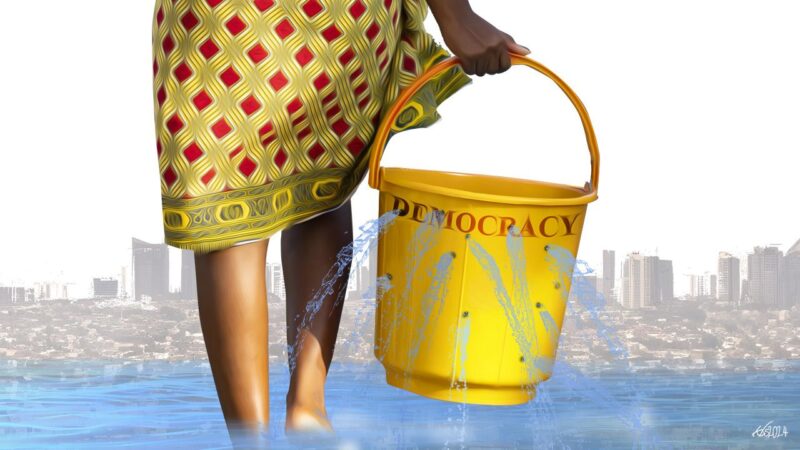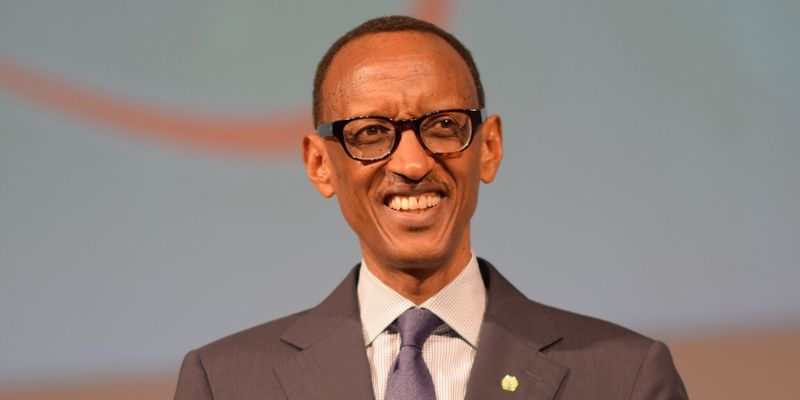When African students and other black persons escaping Ukraine at the start of the Ukraine-Russia conflict were being ejected from exiting transport (trains and busses) and denied entry into neighbouring Poland, many Africans were enraged with the shameless display of racism. One of these Africans was a middle-aged man from Congo—must have been a graduate student—only recently settled in Germany. Seated inside a café at the Berlin central train station with five of his German and British friends, he exploded: “One wonders how they built all these things? From where did you get all this money? Look where we are, this Hauptbahnof [main train station] must have consumed a fortune. The vehicles you make? No way!” His monologue lasted a while as his friends listened either in agreement or disbelief: “This is our money,” he went on. “This is why you never stop these civil wars on the continent only to treat us like sub-humans. But we will not stop coming, whatever the cost!” he declared. His voice sounded austere, choked with emotion. None of his friends volunteered an immediate response. Then one said, this Ukraine situation is embarrassing.
While the angry tirade was sparked by the treatment of Africans trying to escape a war zone, clearly, this man had thought about all this stuff for some time. He must have been educated or observant enough to make the connections between the extraction back home in the DRC, the endless violent wars, the resources in Europe (as coming from his home), and the racist treatment of his kindred who otherwise deserve some respect for sustaining the beautiful lifestyles and infrastructures of the western world. Had he listened to Mallence Bart-Williams’ viral TEDx Talk? The story of this Congolese man, whom I will call Tshibumba Matulu (after the painter Tshibumba Matulu that Dutch anthropologist, Johannes Fabian writes about in Remembering the Present) is the story of “the metropole and the periphery” that dependency theorists Samir Amin, Immanuel Wallerstein and Andre Gunder Frank developed in the 1970s and 1980s. The last line of his vitriol is interesting enough in the sense that now, Africans are seeking to see the world as one whole and thus determined to move to the centre—follow up on and seek to enjoy their resources—at whatever cost. Indeed, despite the innumerable roadblocks (immigration laws, expensive and convoluted visa processes, slave traders in the Maghreb, drowning in the Mediterranean, rank racism, and Islamophobia in the western world), Africans are moving to the centre, to the metropole, en masse. They are determined to follow up on their resources.
This is the story of both the open and disguised violence of neoliberalism, where Africa is heavily mined on the cheap, exploited through unequal exchange, climate/conservation colonialism, with the proceeds coming from African human and natural resources being stolen through inexplicable claims of value addition. This point of view has been recently, succinctly and loudly expressed by Italian Prime Minister Giorgia Meloni in her fight with French President Emmanuel Macron over immigration policies in Europe. Known for her anti-immigrant policies, Meloni’s (selfish) position is that if the French stopped stealing resources from 14 African countries through the clearly colonial and extortionist CFA, Africans would not be forced to make the dangerous journeys to Europe (where, by implication, they come to follow up on their resources, which are violently extracted leaving behind absolute poverty and suffering). In that viral clip doing the rounds across the globe, Meloni concludes that the solution to stop Africans from moving from their country to Europe is to leave them alone and have them receive the full benefit of their God-given resources:
So, the solution is not to take Africans and bring them to Europe, the solution is to free Africa from certain Europeans [especially France] who exploit it and allow these people to live off what they have.
While this message seemed directed at the French, the spread of (both violent and structural) capitalism across the African continent is real and threatening. With the collapse of the African economies about 30 years ago (via structural adjustment programmes), where foreign-owned companies returned under the neoliberal order and took over Africa’s major resources or the pillars upon which these economies stood—mineral resources (gold, oil, coffee, diamonds), banking, telecommunications, selling of agricultural products which used to be a function of cooperatives and direct government help—the continent has been left in a clear condition of morbidity. The bold choice, which I argue should be seen as revolutionary, is to move to the centre and demand the benefits of the resources that have been endlessly stolen from the continent, violently and through disguised extractivist structures.
***
Being a Congolese from Goma, Tshibumba Matulu must have witnessed the scramble for Congolese resources by the rich and mighty of the western world very up-close and personal—Dan Gertler International (DGI), Glencore Plc. and Alain Goetz, all of whom have a strong foothold in the country’s mining sector. These multinational companies own almost all the mining sites in the DRC, and have been implicated in the unending violence in the country, which is connected to the ways in which resources are mined. Take South Sudan as the other example where Glencore has a strong foothold in South Sudanese oil. In early November 2022, Glencore Plc. executives were found guilty of bribing the South Sudanese leadership—starting just four weeks after the country’s independence—as “they sought to profit from political turmoil . . . they inserted themselves into government-to-government deals that had been negotiated at preferential rates”. The Africa Progress Panel estimated that in a period of two years (2010-2012), DRC lost US$1.3 billion in asset sales to DGI. A 2021 study showed that DRC risked losing US$3.71 billion to controversial Israeli businessman Dan Gertler. This is a lot of money—which ends up in Israel where Gertler is one of the richest men and has been controversially implicated in a thousand scandals in Congo. To understand the fact that modern extraction follows a colonial model, one has to appreciate the fact that colonialism’s extraction was and is always outsourced to corporations. King Leopold operated in his individual capacity as a businessman, using his loot to build estates, infrastructures and palaces in Belgium (and not on the African continent). That an independent businessman, Dan Gertler, would promise guns to a government and actually deliver on his promise exposes the ways in which governments in the west outsource businessmen to colonise Africa on their behalf.
These multinational companies own almost all the mining sites in the DRC, and have been implicated in the unending violence in the country.
Dependency theory so succinctly exposed the roots and execution of underdevelopment in Black Africa, which is, in brief, resources being extracted on the cheap from the periphery (Africa), to be moved and generate more value in the metropole. If these resources ever come back to the continent (Latin America or Africa), they return more expensively. In this periphery-metropole dichotomy, endless capitalist exploitation (which mostly thrives on violence) not only depletes resources and opportunities at the periphery, but also makes life unliveable and unbearable. It then enacts tougher controls to keep the peoples of the periphery at the periphery so that they do not move to the metropole and overwhelm its amenities. This is why African journeys to the metropole are not only dangerous, but are also defined by more drama that tends to generate an incredible amount of grim news broadcasts. Dependency theory does not explicitly follow up on the revolutionary journeys where the exploited—like Tshibumba Matulu—painstakingly seek the benefits of their resources in the metropole. This is perhaps because it pursued another route out of this colonial conundrum, which was to de-link the metropole from the periphery.
Capitalism’s violence, revolutionary journeys
Transiting through airports in Dubai or Doha, one will encounter East African languages, especially Kiswahili and Luganda. Manning a counter in twos or threes, staff tend to speak to each other in their languages. While duty stations may not be allocated depending on the mutual native linguistic intelligibility between workers, since all speak English, somehow, workers from the same Great Lakes linguistic community find themselves together. That the numbers of labour migrants moving to the Middle East have soared over the past years is not just testament to the availability of job opportunities in the Middle East, but also to the dire conditions in which they live in their countries—conditions made difficult by the capitalist neoliberal reforms of the 1980s, and in some cases by conflict (especially in Northern Uganda, Karamoja, Turkana areas, South Sudan and Somalia). Middle Eastern salaries are not the greatest attraction as they range between US$600 and US$900 depending on seniority (far much less for domestic work). But that the same amounts cannot be earned back home speaks more to the dire conditions at home.
Data from the Uganda Ministry of Gender, Labour and Social Development published in the Daily Monitor, indicates that for the last six years (2016-2022), an average of 24,086 Ugandans left the country annually in search of employment, especially in the Middle East. What makes conditions so hostile in the Great Lakes Region? Besides Somalia and Central African Republic—where there is outright violence—why is the scale of movement of young people in particular so high in the Great Lakes region? It is the ravages of both internal capitalism (by the petty bourgeoisies) and foreign capital moving from South Africa northwards, but also coming from Europe and North America—and China exploiting the neoliberal environment. This is evident in cases of land grabbing, forced evictions, refugee crises caused by resource wars, especially in DRC and South Sudan, and the terrible business environment in the region.
Dependency theory does not explicitly follow up on the revolutionary journeys where the exploited painstakingly seek the benefits of their resources in the metropole.
Theoretically and practically, without the violence of the state and other related state actors, it is difficult for capitalism to reproduce itself. States do not only set the conditions under which extraction occurs (such as banking regimes, neoliberal regimes), but they are also ready to commit violence on the exploited. In Uganda, cases of land grabbing by local capitalists have made land ownership and agriculture difficult. In other cases, collusion between the state and foreign capitalists to evict peasants off their lands is causing first, rural urban-migration, and then journeys abroad. Among the most memorable cases is that of the 2001 evictions in Mubende where the German coffee company Neumann Gruppe used outright violence (with the help of the state), including shooting, burning houses and animals, and maiming people to create way for a coffee plantation. Over 2,000 families remain destitute and are yet to find justice. Faced with mass unemployment, extortionist banking regimes with high interest rates that have stymied creativity and made business difficult across East Africa, many young people struggle to start thriving businesses.
Violent evictions have also taken place in Kenya and Tanzania to create way for capitalist expansion or capitalist ostentation (Franz Fanon warned that political elites would turn the continent into an entertainment centre for foreign capitalists). This is the story in Samburu where evictions have taken place to create way for American charities. It is the story of the green colonialism that led to the Ogiek and Maasai evictions from the Mau Forest in the name of conservation. Guillaume Blanc’s recently published book, The Invention of Green Colonialism, demonstrates how the rhetoric of conservation (by colonially founded organisations including UNESCO, WWF, IUCN) perpetuates a colonial model of conservation that privileges animals and plants over humans. While capitalists in Europe and North America—consuming endlessly—have destroyed nature, they have maintained a mythical, fictionalised Eden in Africa, insisting that peasants, who have developed ways of coexisting with nature, who eat very little meat, have neither cars, nor computers nor smartphones, are a danger to the environment. They are evicted from huge swathes of land that are then reserved for white people to hunt and gaze at wild animals.
Away from the forests and the plains, the poor are also being “cleansed” from the capital cities. The 2021 Mukuru Kwa Njega eviction in Nairobi that left 40,000 people homeless is etched in the memories of Kenyans. In what Mwaura Mwangi aptly termed “Demolition Colonialism”, thousands of poor Nairobians have had their houses demolished so that the rich can enjoy easy transit. This is not anti-development position, but rather a reading that seeks to recognise the rights of the poor, and make visible the history of slums in major cities across Africa.
Theoretically and practically, without the violence of the state and other related state actors, it is difficult for capitalism to reproduce itself.
Then come the wars in the DRC, Somalia, CAR, and South Sudan—a product of business dealings by multinationals including Glencore and CNOOC, among others— that have led to an increase in refugees numbers, now reaching 2.3 million people according to UNHCR. In his book Saviours and Survivors, Mahmood Mamdani implicates CNOOC and ExxonMobil in protecting oil wells using different rebel groups in the Sudan-South Sudan conflict. The end product of these clandestine oil dealings are the over 1.5 million refugees hosted in Uganda, making it the country with the largest number of refugees in the world. The influx of people escaping resource-related conflicts has overwhelmed resources in the Great Lakes region. And while many of the refugees will stay in the region, many others are making the journey to the Middle East, to Europe and to North America.
With all this aggressive capitalist expansion manifesting in different forms, the African in the Great Lakes (and other places on the continent) is left with no choice but to make the journey to Europe and to North America. I want to read these journeys not just as migration, but as revolution. They might seem puny, unorganised and migrating out of desperate need, but Africans are moving to the centre to benefit from the resources that continue to be extracted from their continent. This is how the extractors perceive these journeys—not as migration, but as revolution—which explains why there are so many roadblocks along the way.
–
This article is part of a series on migration and displacement in and from Africa, co-produced by the Elephant and the Heinrich Boll Foundation’s African Migration Hub, which is housed at its new Horn of Africa Office in Nairobi.








